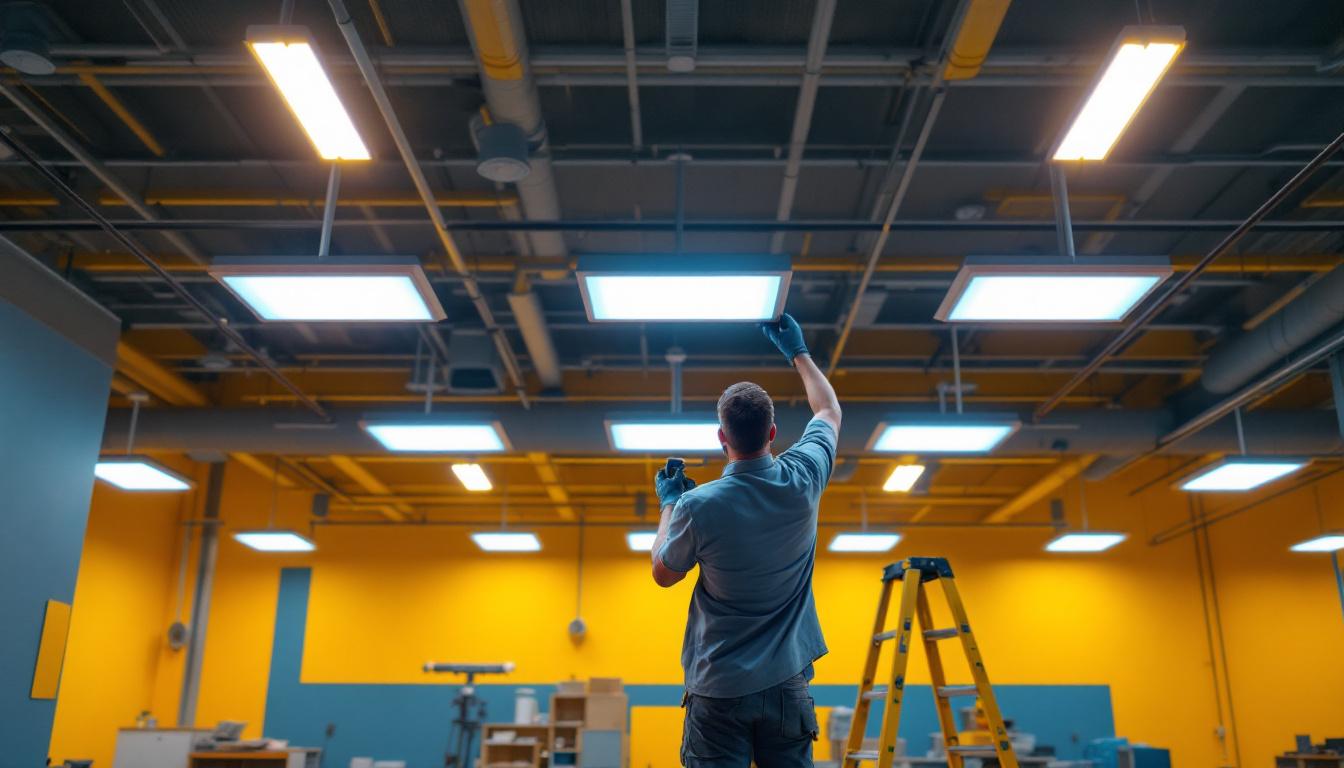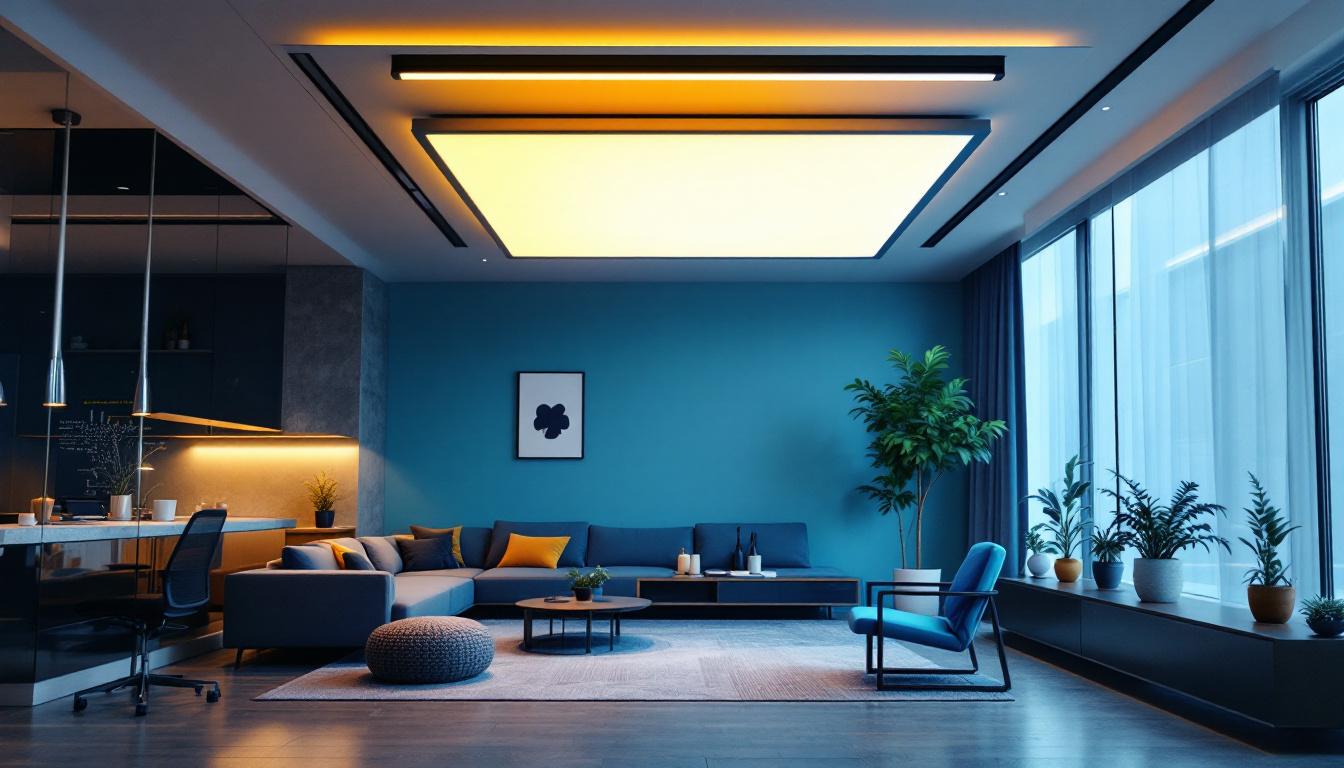
Lighting contractors play a crucial role in shaping the ambiance and functionality of residential and commercial spaces. However, even seasoned professionals can fall prey to common pitfalls when working with A type bulbs. Understanding these mistakes can enhance not only the quality of work but also client satisfaction. This article delves into the frequent errors made by lighting contractors and offers insights on how to avoid them.
Color temperature is a critical aspect of lighting that affects the mood and perception of a space. Measured in Kelvin (K), it ranges from warm (around 2700K) to cool (over 5000K). Many contractors overlook this detail, opting for standard bulbs without considering the specific needs of the environment.
For instance, a warm white light is often preferred in residential settings to create a cozy atmosphere, while cooler temperatures are more suitable for workspaces where focus and clarity are paramount. Ignoring these nuances can lead to dissatisfaction among clients who expect a certain ambiance.
When discussing lighting options with clients, it is essential to inquire about their preferences and the intended use of each space. This conversation can guide the selection of the appropriate color temperature. Providing samples or visual aids can also help clients visualize the impact of different temperatures, leading to more informed decisions.
Additionally, consider the existing decor and color schemes. A well-coordinated lighting plan enhances the overall aesthetic and functionality of the space, reinforcing the contractor’s expertise and attention to detail.
With increasing awareness of environmental issues, energy efficiency has become a significant consideration in lighting design. Many contractors still rely heavily on traditional A type bulbs without exploring more energy-efficient alternatives, such as LED options. This oversight can lead to higher energy costs for clients and a missed opportunity for contractors to position themselves as environmentally conscious professionals.
LED A type bulbs offer numerous benefits, including longer lifespans and reduced energy consumption. By educating clients about these advantages, contractors can help them make informed choices that align with sustainability goals.
Contractors should be prepared to provide clients with a clear comparison of energy costs associated with different bulb types. A simple calculation can illustrate the long-term savings of switching to energy-efficient options. This information not only aids in decision-making but also demonstrates the contractor’s commitment to providing value.
Lighting is not just about choosing the right bulb; it’s also about how and where those bulbs are placed. Improper placement can result in uneven lighting, shadows, and glare, which can detract from the overall effectiveness of the design. Contractors often make the mistake of following standard spacing guidelines without considering the unique characteristics of the space.
Before installation, it is vital to assess the layout, dimensions, and purpose of each area. For example, in a kitchen, task lighting should be strategically placed over work surfaces, while ambient lighting should provide overall illumination. Taking the time to plan the placement of fixtures can significantly enhance the functionality and aesthetics of the space.
In today’s digital age, lighting design software can be an invaluable tool for contractors. These programs allow for precise calculations of light levels, fixture placement, and the overall impact of different lighting schemes. By leveraging technology, contractors can create more accurate designs and present clients with visual representations of the proposed lighting solutions.
Dimming options are often an afterthought in lighting design, yet they can greatly enhance the versatility and ambiance of a space. Many contractors fail to discuss the benefits of dimmable A type bulbs and compatible dimmer switches with their clients. Dimming allows users to adjust the light intensity based on the time of day or activity, creating a more personalized environment.
In addition to improving comfort, dimming can also contribute to energy savings. By reducing the brightness when full illumination is unnecessary, clients can extend the lifespan of their bulbs and decrease energy consumption. Highlighting these advantages can elevate a contractor’s service offering and appeal to environmentally conscious clients.
As smart home technology becomes increasingly popular, integrating smart dimmers and bulbs into lighting designs can set contractors apart from the competition. These devices offer remote control capabilities and programmable settings, allowing users to customize their lighting experience effortlessly. Contractors should stay informed about the latest smart lighting trends and educate clients on the benefits of these innovations.
Effective lighting design typically involves three layers: ambient, task, and accent lighting. Unfortunately, many contractors focus solely on one type, often leading to poorly lit spaces. A balanced approach that incorporates all three layers can significantly enhance the functionality and aesthetics of a room.
Ambient lighting provides overall illumination, task lighting focuses on specific areas for activities like reading or cooking, and accent lighting highlights architectural features or artwork. By understanding the interplay between these layers, contractors can create a cohesive lighting plan that meets the diverse needs of their clients.
During initial consultations, contractors should engage clients in discussions about their daily activities and how they envision using each space. This dialogue can uncover specific needs that inform the layering of lighting. For example, a home office may require brighter task lighting during work hours, while a living room may benefit from softer ambient lighting for relaxation.
Every region has specific building codes and regulations that govern electrical installations, including lighting. Contractors who overlook these requirements risk not only potential fines but also safety hazards. It is essential to stay updated on local codes and ensure that all installations comply with safety standards.
Familiarity with regulations not only protects the contractor but also instills confidence in clients. When clients see that their contractor is knowledgeable about compliance, they are more likely to trust their expertise and recommendations.
Maintaining thorough documentation of compliance efforts is crucial. This includes permits, inspection reports, and any correspondence with local authorities. Proper documentation can serve as a valuable resource for future projects and provide peace of mind for both contractors and clients.
Lighting contractors often focus on the technical aspects of installation but may neglect to educate clients about the products and systems being implemented. Providing clients with information about bulb types, maintenance, and energy efficiency can empower them to make informed decisions and appreciate the value of their investment.
Educational sessions can take various forms, from informal discussions during the consultation to more structured presentations. Offering resources like brochures or links to informative websites can also enhance client understanding and engagement.
Following installation, contractors should remain available for questions and support. Providing a clear point of contact for clients can foster ongoing relationships and encourage referrals. Additionally, follow-up visits or check-ins can demonstrate a commitment to client satisfaction and reinforce the contractor’s reputation for quality service.
While functionality is paramount in lighting design, aesthetics should not be overlooked. Many contractors focus solely on the technical aspects, neglecting the visual appeal of the fixtures and their integration into the overall design scheme. A well-designed lighting plan should enhance the architectural features of a space and complement the decor.
Contractors should stay attuned to current design trends and be prepared to offer a variety of fixture styles, finishes, and colors. This knowledge can help clients achieve a cohesive look that aligns with their personal style and enhances the overall atmosphere of their space.
Collaborating with interior designers or architects can lead to more comprehensive lighting solutions. By working together, contractors can ensure that the lighting design aligns with the overall vision for the space. This partnership can also open up opportunities for referrals and expanded business networks.
Quality control is an essential aspect of any lighting project. Contractors who neglect to test fixtures before installation may encounter issues that could have been easily resolved beforehand. It is crucial to verify that all bulbs function correctly and meet the specified requirements.
Testing can also include evaluating the light output and color rendering of the bulbs. Ensuring that the chosen A type bulbs produce the desired effect can prevent costly adjustments and client dissatisfaction later on.
Contractors should establish clear quality standards for their projects, including guidelines for testing and inspection. This proactive approach can help identify potential issues early in the process and reinforce the contractor’s commitment to delivering high-quality results.
Building strong relationships with clients is essential for long-term success in the lighting industry. Many contractors complete a project and move on without following up, missing opportunities to gather feedback and address any lingering concerns. Regular follow-ups can demonstrate a commitment to client satisfaction and encourage repeat business.
Following up can take various forms, from a simple phone call to a more formal survey. Gathering feedback not only helps contractors improve their services but also provides valuable insights into client preferences and needs.
Happy clients are often the best source of referrals. By maintaining open lines of communication and demonstrating a commitment to quality, contractors can encourage satisfied clients to share their experiences with friends and family. This word-of-mouth marketing can significantly enhance a contractor’s reputation and lead to new business opportunities.
Lighting contractors face numerous challenges in their work, particularly when it comes to A type bulbs. By recognizing and addressing common mistakes, contractors can elevate their service offerings and enhance client satisfaction. From understanding color temperature and energy efficiency to ensuring proper fixture placement and client education, attention to detail is paramount.
Ultimately, a successful lighting project is one that meets both the functional and aesthetic needs of the client. By avoiding these common pitfalls and adopting best practices, contractors can position themselves as trusted experts in the field, paving the way for continued success and growth in their business.
Ready to avoid common lighting mistakes and elevate your projects with superior A type bulbs? At LumenWholesale, we provide lighting contractors with the highest quality, spec-grade lighting products at prices that can’t be beaten. Say goodbye to inflated markups and hello to a vast selection of reliable, high-performance lighting that meets the most rigorous industry standards. Plus, with free shipping on bulk orders, you can stock up on premium lighting solutions without worrying about hidden fees. Don’t compromise on quality or value—choose LumenWholesale for the perfect blend of affordability and convenience. Wholesale Lighting at the Best Value is just a click away.

Discover how Max Lite revolutionizes lighting projects with enhanced efficiency and performance.

Discover the ultimate guide for lighting contractors on mastering suspended ceiling LED light panels.

Discover how solar pole lights can revolutionize your lighting projects and give you a competitive edge in securing more contracts.

Discover the benefits of 2X4 LED flat panel lights and learn how they can future-proof your lighting projects.